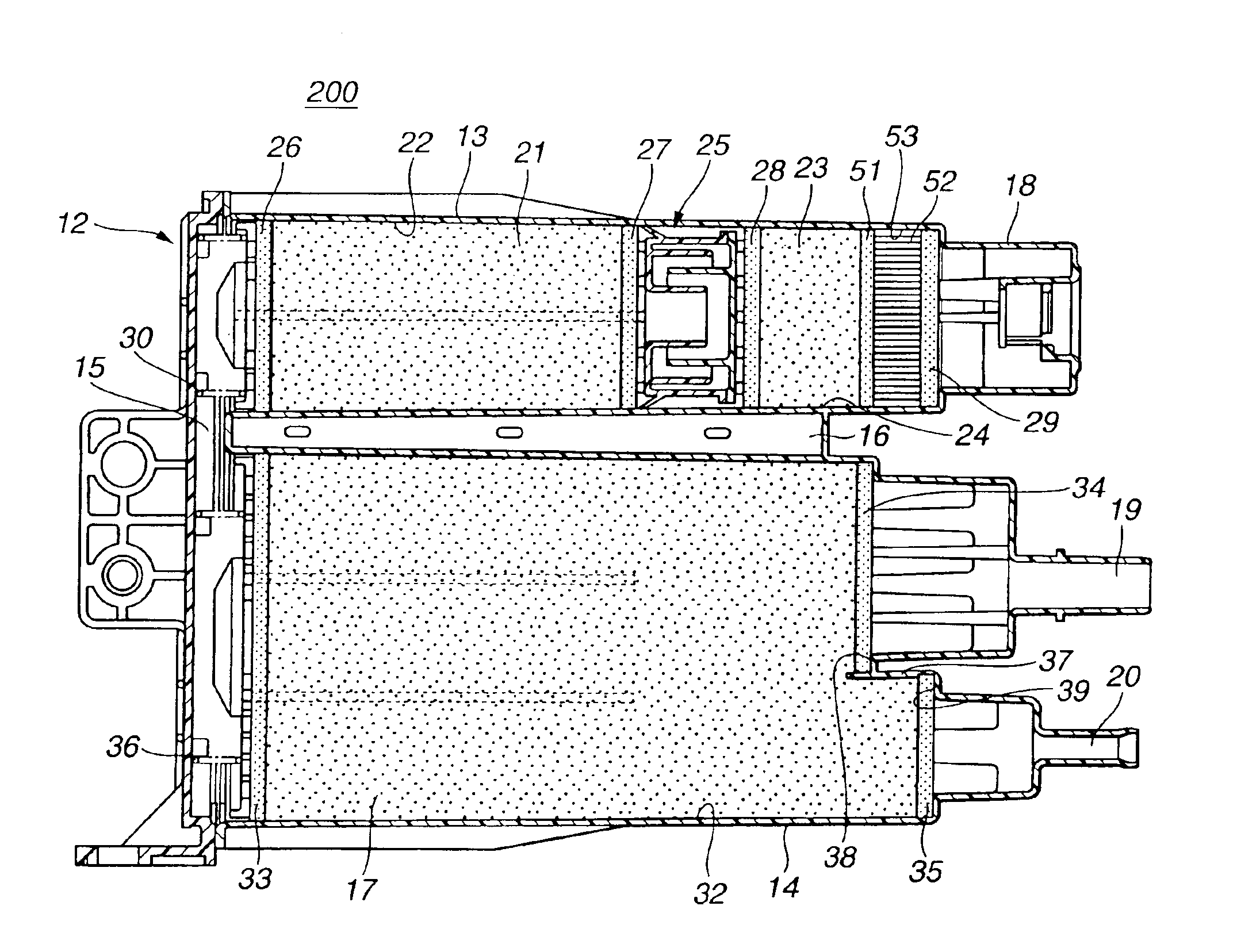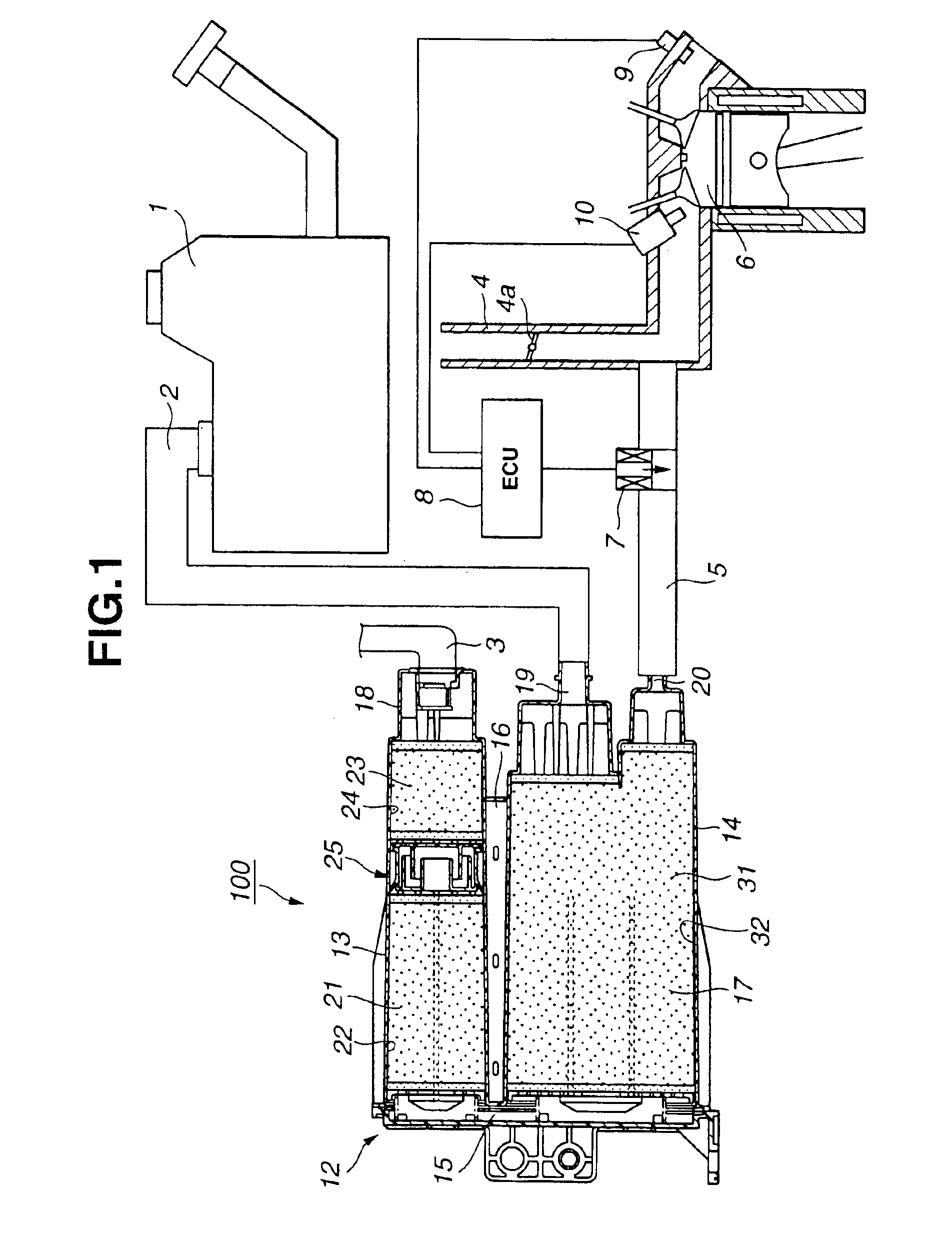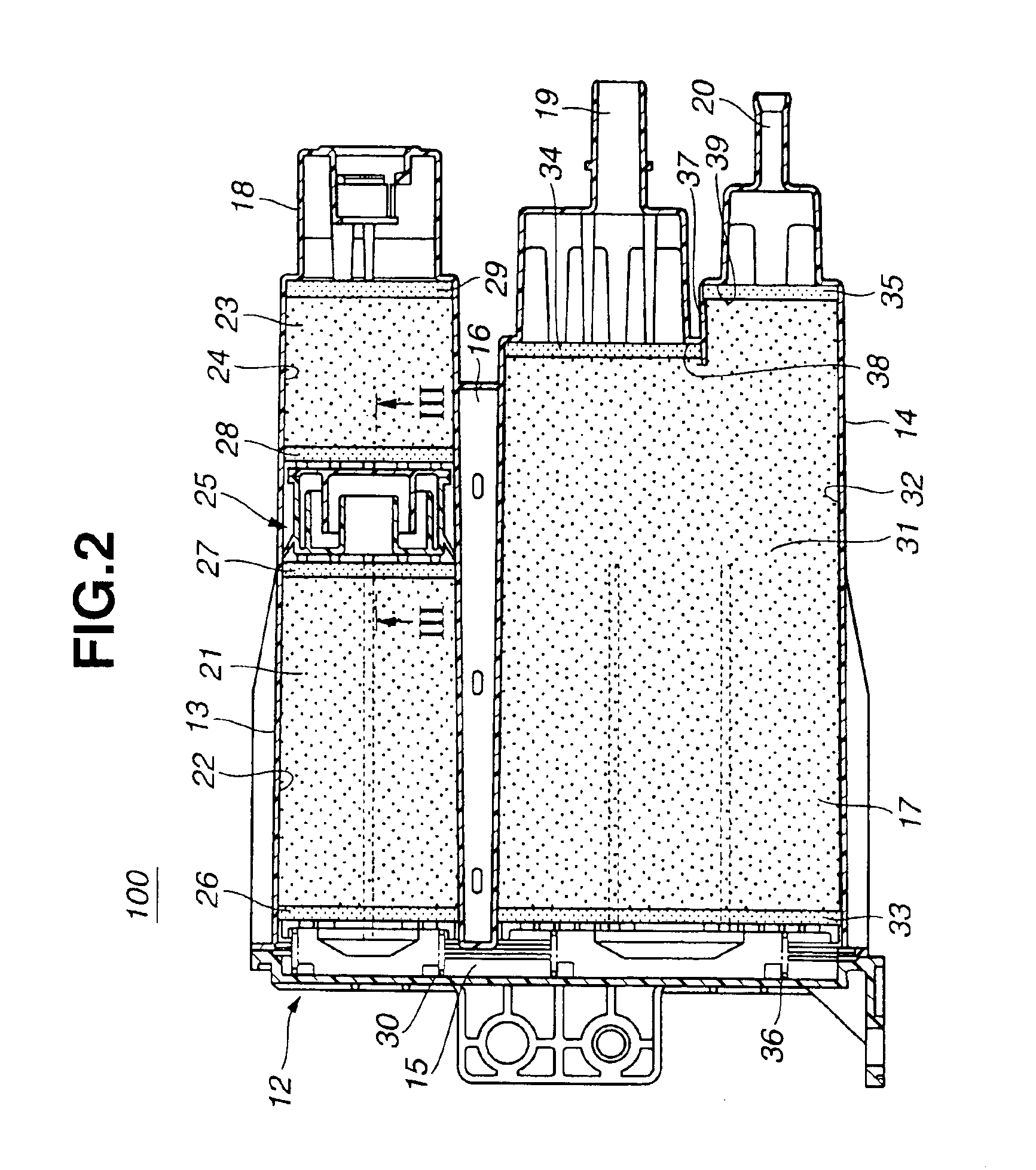Carbon canister for use in evaporative emission control system of internal combustion engine
a technology of carbon canister, which is applied in electrical control, combustion-air/fuel-air treatment, and separation processes, etc., can solve the problems of not providing the evaporative emission control system with a satisfied performance, and the carbon canister shows a considerable pressure loss between the first and second vapor trapping chambers, so as to minimize the unsatisfactory pressure drop between the two vapor trapping chambers
- Summary
- Abstract
- Description
- Claims
- Application Information
AI Technical Summary
Benefits of technology
Problems solved by technology
Method used
Image
Examples
first embodiment
[0026]Referring to FIGS. 1 to 7, particularly FIGS. 1 and 2, there is shown a carbon canister 100 which is the present invention.
[0027]As is best shown in FIG. 2, carbon canister 100 comprises a generally cylindrical case 12 of a molded plastic, which includes a first hollow portion 13 and a second hollow portion 14 which are disposed on each other and extend in parallel with each other.
[0028]These two hollow portions 13 and 14 have respective left open ends which are integrally connected to spaced portions of a connector passage portion 15. Thus, a generally U-shaped passage 17 is defined in and by the plastic case 12, which comprises an interior of first hollow portion 13, that of connector passage portion 15 and that of second hollow portion 14.
[0029]As shown, first and second hollow portions 13 and 14 have a reinforcing rib 16 integrally interposed therebetween.
[0030]As shown in FIG. 1, first hollow portion 13 is formed at a right end thereof with an atmospheric air inlet port 1...
second embodiment
[0091]Referring to FIG. 8, there is shown a carbon canister 200 which is the present invention.
[0092]Since the second embodiment 200 is similar in construction to the above-mentioned first embodiment 100, only portions that are different from those of the first embodiment 100 will be described in detail in the following.
[0093]As is understood from the drawing, in second cylindrical chamber 24 at a position close to atmospheric air inlet port 18, there is disposed a fourth activated charcoal mass 52. More specifically, the fourth activated charcoal mass 52 is formed into a honeycomb structure and an eighth filter member 51 is put between the fourth activated charcoal mass 52 and second activated charcoal mass 23. That is, due to provision of eighth filter member 51 in second cylindrical chamber 24, a fourth cylindrical chamber 53 is defined in which the honeycomb type activated charcoal mass 52 is disposed.
[0094]In this second embodiment 200, the L / D rate of first cylindrical chamber...
third embodiment
[0106]Referring to FIG. 11, there is shown a carbon canister 300 which is the present invention.
[0107]Since the third embodiment 300 is similar in construction to the above-mentioned first embodiment 100, only portions that are different from those of the first embodiment 100 will be described in detail in the following.
[0108]As is understood from the drawing, from atmospheric air inlet port 18, there extends a pipe 63 in which a fourth activated charcoal mass 52 is disposed. More specifically, the fourth activated charcoal mass 52 is formed into a honeycomb structure and sandwiched between ninth and tenth filter members 64 and 65. That is, in the pipe 63, there is defined a fourth cylindrical chamber 53 in which the honeycomb type activated charcoal mass 52 is disposed.
[0109]In this third embodiment 300, the L / D rate of first cylindrical chamber 22 and that of second cylindrical chamber 24 are both from about 2 to about 4. In third cylindrical chamber 32, the L / D rate is from about...
PUM
 Login to View More
Login to View More Abstract
Description
Claims
Application Information
 Login to View More
Login to View More - R&D
- Intellectual Property
- Life Sciences
- Materials
- Tech Scout
- Unparalleled Data Quality
- Higher Quality Content
- 60% Fewer Hallucinations
Browse by: Latest US Patents, China's latest patents, Technical Efficacy Thesaurus, Application Domain, Technology Topic, Popular Technical Reports.
© 2025 PatSnap. All rights reserved.Legal|Privacy policy|Modern Slavery Act Transparency Statement|Sitemap|About US| Contact US: help@patsnap.com



